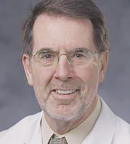
In the near future, I don’t think patients will be asked or expected to change from their current drug to a biosimilar. But I think eventually there will be rapid adoption.— Jeffrey Crawford, MD
Tweet this quote
The U.S. Food and Drug Administration (FDA) approved its first biosimilar drug, filgrastim-sndz (Zarxio), in 2015, allowing it to compete with the granulocyte colony-stimulating factor filgrastim (Neupogen) to treat neutropenia in chemotherapy patients. So far, filgrastim-sndz is the only biosimilar in oncology to reach the U.S. market, but others are on the way, heightening awareness that these lower-cost alternatives to biologics could soon be an option in everyday practice.
But how soon? How much less will they cost? And how readily will they be adopted by physicians and patients?
“In the near future, I don’t think patients will be asked or expected to change from their current drug to a biosimilar,” said Jeffrey Crawford, MD, Co-Director of the Solid Tumor Therapeutics Program at the Duke Cancer Institute, who spoke at a policy briefing on biosimilars organized by the National Comprehensive Cancer Network® (NCCN®). “But I think eventually there will be rapid adoption,” he said in an interview, citing favorable data on safety as well as cost savings.
Growing Field
A biosimilar is a biologic product that is highly similar to a licensed biologic (called the “reference product”). It may have minor differences in clinically inactive components, according to the FDA’s definition, but no clinically meaningful differences in terms of safety, purity, and efficacy.
The European Medicines Agency approved its first biosimilar (Omnitrope, a recombinant human growth hormone similar to somatropin) in 2006. Four years later, the U.S. Congress passed the Biologics Price Competition and Innovation Act as part of the Affordable Care Act, paving the way for the FDA to set up its own biosimilar program.
While filgrastim-sndz is so far the only cancer biosimilar to emerge from that program, more are in review. A search of the federal government’s clinicaltrials.gov database brings up 20 trials for biosimilars, 5 that could substitute for blockbuster, high-priced monoclonal antibodies used in cancer treatment, including trastuzumab (Herceptin), bevacizumab (Avastin), and rituximab (Rituxan). Several others are for colony-stimulating factors, potential competitors of filgrastim-sndz.

Janet Woodcock, MD
Including biosimilars for diseases other than cancer, about 60 agents were enrolled in the FDA’s Biosimilar Product Development Program in early 2016, according to congressional testimony by the FDA’s Janet Woodcock, MD, Director of the agency’s Center for Drug Evaluation and Research.
Acceptance and Uptake
One factor in the acceptance of biosimilars will be the recommendations of oncology guideline committees such as those of ASCO and the NCCN. Both organizations updated their clinical guidelines to include filgrastim-sndz following its FDA approval.
The agency’s approval process for biosimilars includes a preclinical review that is much the same as that required for biologics, evaluating structure, biology, receptor binding, pharmacokinetics, and pharmacodynamics, for example. The FDA also requires an abbreviated clinical trial to address any likely differences between the biosimilar and its reference product, but not a large randomized trial.
Dr. Crawford, who chairs the NCCN guideline panel for myeloid growth factors, said that one issue confronting the panel was whether the data could be extrapolated to all the same indications as the original filgrastim. The FDA approved filgrastim-sndz for all the same indications, but the panel’s consensus was that the evidence for its use in one of them—mobilization of allogeneic hematopoietic cell donors—was not as good as the evidence for other indications. In the final guidelines, the panel rated the evidence for use in allogeneic transplants as 2B (lower-level evidence with NCCN consensus). For all other indications, the evidence is rated 2A (lower-level evidence and uniform NCCN consensus).
Extrapolation is likely to continue to be a key issue, Dr. Crawford said. The discussion of biosimilars in the updated NCCN Guidelines® notes that in the absence of large randomized trials, “clinicians must make decisions on the appropriate incorporation of biosimilars by relying on fewer comprehensive studies and more on clinical experience and judgment.”
Another issue that could affect uptake is the potential interchangeability of biosimilars and their reference biologics. Generic drugs, which are exact chemical copies, are considered interchangeable with the original product—that is they can always be substituted for that product. But biosimilars are not exact copies, and their interchangeability has yet to be addressed by the FDA. According to discussants at the NCCN policy briefing, the FDA is now working on criteria for interchangeability.
Also affecting the uptake of biosimilars will be the policies adopted by large pharmacies. Already, one large company, CVS Health Corporation, has announced that biosimilars, including filgrastim-sndz, will be “a key component of our 2017 standard formulary strategy, replacing higher-cost drugs within the categories,” according to a company statement.
Finally, acceptance of biosimilars used in treatment may be slower than acceptance of those used in supportive care. For instance, said Dr. Crawford, a breast cancer patient doing well on trastuzumab may be hesitant to switch to a biosimilar in the middle of treatment. On the other hand, for a new patient starting therapy, an approved biosimilar to trastuzumab may be recommended.
“It will depend on the comfort level of the patient and the oncologist,” he said, “and whether the evidence from preclinical studies, coupled with sufficient clinical trial experience, provide confidence that the biosimilar has the same efficacy and safety as the originator molecule.”
Pricing
Though cost will undoubtedly be a factor in the uptake of biosimilars, it is not clear how much less expensive biosimilars will be.
In Europe, their price is generally reported to be about 30% below that of the reference products, but filgrastim-sndz in the United States is priced just 15% below filgrastim. That could change when other filgrastim biosimilars reach the U.S. market, as they have in Europe. “The real opportunity for savings comes when there are several different biosimilars for the same indication,” Dr. Crawford noted.
The pharmacy benefits manager Express Scripts estimated in 2013 that biosimilars could provide $250 billion in U.S. health-care savings over the next decade if 11 widely used, expensive biologics faced competition from biosimilars. The company’s announcement said the estimate was based on “conservative estimates of utilization, cost, and consumer inflation.”
A much lower estimate came from a 2014 RAND Corporation study that projected about $44 billion in savings over 10 years. The RAND researchers assumed that biosimilars would penetrate 60% of the U.S. market and pointed out that many variables will play a role in pricing, “including payment arrangements, competition, and acceptability.”
One thing that does seem certain is that more biosimilars will be coming on the U.S. market in the next few years, and more biologics will be facing competition. Some of the largest pharmaceutical companies, including Amgen, Pfizer, Sandoz (the generics division of Novartis), Mylan, Merck, and Eli Lilly, have biosimilars in their pipelines, some as alternatives to their own biologics.
Pending lawsuits will slow their progress, in some cases. But it still seems likely, Dr. Crawford said, that the future of biologics is biosimilars. ■
Disclosure: Dr. Crawford is a scientific advisor for Merck, Novartis, and Pfizer; data and safety monitoring board member for Genentech/Roche; and an investigator on clinical trials for Amgen, AstraZeneca, Bayer, and Bristol-Myers Squibb.

